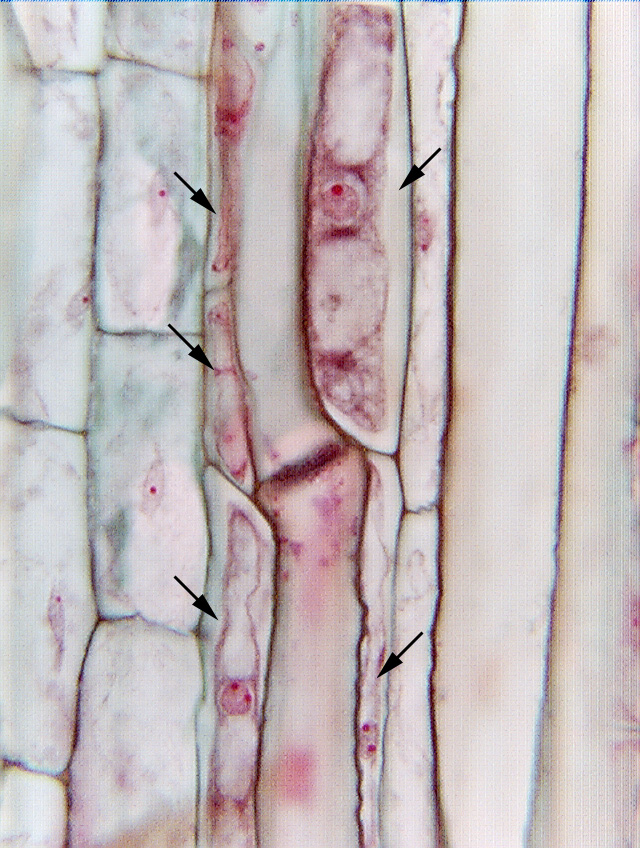 Fig.
8.2-2. Magnification of sieve tube member of milkweed. This
micrograph shows the sieve plate at high magnification; its tilt is obvious, as
are the bent ends of both sieve tube members. Notice that the cells on the left
are all short, block-shaped and have protoplasts, so they are obviously not
sieve tube members. They are also too large to be companion cells (they also do
not contact sieve tube members). The two long cells on the right have the empty
appearance of sieve tube members, but without being able to examine them for
tilted sieve plates or bent ends, we cannot be certain from this photo. The
arrows point to several narrow, cytoplasmic cells that are in contact with sieve
tube members. They appear to be companion
cells.
Fig.
8.2-2. Magnification of sieve tube member of milkweed. This
micrograph shows the sieve plate at high magnification; its tilt is obvious, as
are the bent ends of both sieve tube members. Notice that the cells on the left
are all short, block-shaped and have protoplasts, so they are obviously not
sieve tube members. They are also too large to be companion cells (they also do
not contact sieve tube members). The two long cells on the right have the empty
appearance of sieve tube members, but without being able to examine them for
tilted sieve plates or bent ends, we cannot be certain from this photo. The
arrows point to several narrow, cytoplasmic cells that are in contact with sieve
tube members. They appear to be companion
cells.